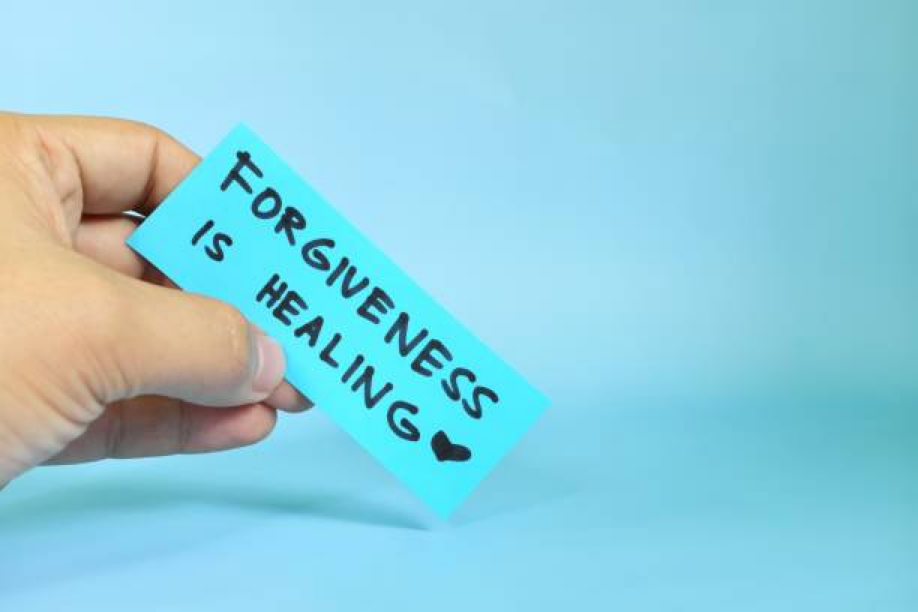By Peter Attridge, PhD
•
November 11, 2025
As a Catholic therapist, I often sit with clients who are wrestling with a deeply human question: When is it the right time to make amends ? Whether it’s reaching out to someone who has hurt them, or considering their own responsibility in a fractured relationship, the process of healing often leads us into the tender territory of reconciliation. But forgiveness and reconciliation aren’t the same thing. Forgiveness is something we’re called to offer freely—an act of the will that releases resentment and gives us peace, even when the other person hasn’t apologized. Reconciliation, on the other hand, is a step that involves two people. And discerning when—or even if—that step should be taken requires wisdom, prayer, and often, boundaries. Let’s explore how we can approach this process with care and courage, supported by both therapeutic tools and the richness of our Catholic faith. Discerning the Right Time to Make Amends Discernment is a familiar concept in Catholic life. We use it to seek God's will in big decisions—vocations, careers, relationships. But it’s just as important in the smaller, more personal moments too, like choosing when to reach out to someone who has hurt us, or someone we may have hurt. Therapy can be a valuable space for this kind of discernment. Sometimes the desire to make amends comes from a sincere place of healing and readiness. Other times, it may be driven by guilt, pressure, or a longing for closure that the other person may not be able to give. In our sessions, I often help clients explore their motivations. Are you seeking peace, or permission? Healing, or validation? Discernment is about honesty—with yourself, with God, and with your emotional limits. St. Ignatius of Loyola offers a helpful framework for discernment rooted in prayerful reflection, noticing the movements of the heart. If the thought of reconciliation brings a sense of peace, courage, and compassion, it may be time. If it stirs anxiety, dread, or a sense of obligation, it may be wise to wait, or to approach things differently. The Role of Boundaries in Forgiveness and Healing One of the most common misconceptions I hear, especially among people of faith, is that setting boundaries is somehow un-Christian. But in truth, boundaries are acts of love —toward ourselves and others. They help define what is safe, respectful, and life-giving in a relationship. Forgiveness does not mean allowing someone to continue harming us. Christ calls us to forgive, yes, even “seventy times seven” times (Matthew 18:22), but He does not call us to abandon prudence or endure abuse. Remember, even Jesus withdrew from hostile crowds at times (John 10:39), and He taught that reconciliation involves both repentance and change (Luke 17:3-4). In therapy, we often work on developing “healthy boundaries” that allow us to engage with others from a place of strength and safety. For example, it’s okay to forgive a parent for past wounds without allowing them to manipulate your present life. It’s okay to love a sibling from a distance if closeness continues to result in harm. And it’s okay to hope for reconciliation without forcing it to happen. Boundaries are not walls; they are gates. They give us the freedom to let people in—but only when it is healthy and appropriate to do so. Making Amends with Compassion and Clarity If and when the time does come to make amends, whether as the person extending forgiveness or the one asking for it, approaching the conversation with humility and clarity is essential. We can take inspiration from the Sacrament of Reconciliation, where the process of confession involves examining our conscience, naming our sins, expressing true contrition, and receiving both forgiveness and guidance. Similarly, when making amends in our personal lives, we begin by acknowledging what happened—not defensively, but honestly. We share how the situation has affected us. We listen. We don’t demand immediate restoration, but we open the door to it. And sometimes, we might take that step and find that the other person isn’t ready. Or they respond with defensiveness, denial, or more harm. That’s when we return to our boundaries. Forgiveness is still possible, but reconciliation may need to remain a hope rather than a present reality. Spiritual Guidance Along the Way Throughout this process, our faith can be an anchor. Prayer becomes a conversation with the God who knows every wound and walks with us through every step of healing. The saints offer examples of both radical forgiveness and wise discernment. St. Monica, for instance, teaches us about perseverance in love and prayer without enabling harmful behavior. St. Maria Goretti’s story is often cited for her forgiveness, but we also remember her clarity in saying no to harm. And of course, the Sacraments nourish us. Receiving the Eucharist strengthens us to love like Christ. Confession helps us experience God’s mercy, so we can extend it more freely to others. Spiritual direction can also be helpful when navigating complex relationships and emotional burdens through a faith-based lens. Trusting the Slow Work of Healing Making amends and setting boundaries aren’t one-time decisions. They are part of an ongoing, unfolding process of healing. We may feel ready one day and hesitant the next. That’s okay. Forgiveness is not linear, and relationships—especially broken ones—rarely heal overnight. But I’ve seen firsthand the beauty that emerges when people engage in this work with courage. When they honor both their pain and their desire for peace. When they protect their hearts with boundaries, but still remain open to love. And when they trust that, even if reconciliation is not possible now, it may one day be—with God’s grace. In Conclusion If you’re in the midst of wrestling with whether to make amends, take heart. It’s not an easy decision, and it doesn’t have to be rushed. Therapy can offer tools and support. Your faith can offer wisdom and hope. And both can help you move forward with peace. Forgiveness will always be a part of the journey. But reconciliation? That’s something we discern, with prayer and prudence. And no matter where you land—whether you reach out, stay silent, or hold space from afar—you are not alone in the journey. If you haven’t yet read Part One of this series, I encourage you to explore the foundations of forgiveness and healing in both therapy and Catholic tradition. That post dives into the inner process of releasing pain and embracing God’s mercy—a powerful first step before considering reconciliation. May you be filled with gentleness, wisdom, and the peace that comes from the One who forgave us first. Forgiveness can feel impossible at times—but it’s also one of the most healing gifts we can give ourselves. If you're carrying the weight of resentment or hurt and feel ready to explore a path toward release and peace, therapy can help. At Holy Family Counseling Center , we create a safe space to process the past, understand your emotions, and move forward with intention. Connect with us when you're ready—we’re here to walk that path with you.






